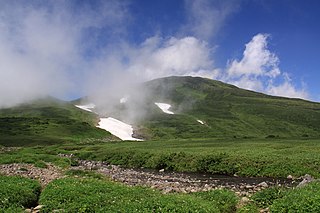 W
WBandai-Asahi National Park is a national park in the Tōhoku region, Honshū, Japan. The park site straddles over Fukushima Prefecture, Yamagata Prefecture, and Niigata Prefecture. The park was designated as a national park on September 5, 1950. The park encompasses 186,404 ha of land, consisting of three independent units: the Dewasanzan-asahi Region, Iide Region, and Bandaiazuma-Inawashiro Region.
 W
WChōkai Quasi-National Park is a Quasi-National Park in Akita and Yamagata Prefectures, Japan. Established in 1963, the park's central feature is the twin volcano of Mount Chōkai, although it also includes coastal areas of northern Yamagata and southern Akita Prefectures. It is rated a protected landscape according to the IUCN. The landscape of Kisakata (象潟), featured in Bashō's Oku no Hosomichi, was transformed by the uplift of land in an earthquake of 1804.
 W
WKurikoma Quasi-National Park is a Quasi-National Park that extends between Akita, Iwate, Miyagi, and Yamagata Prefectures, Japan. Established in 1968, the central feature of the park is Mount Kurikoma (栗駒山) at 1,627 m (5,338 ft). It is rated a protected landscape according to the IUCN.
 W
WMogamigawa Prefectural Natural Park is a Prefectural Natural Park in Yamagata Prefecture, Japan. Established in 1971, the park spans the borders of the municipalities of Sakata, Shōnai, and Tozawa. The park's central feature is the eponymous Mogami River.
 W
WShōnai Kaihin Prefectural Natural Park is a Prefectural Natural Park in Yamagata Prefecture, Japan. Established in 1948, the park lies within the municipalities of Sakata and Tsuruoka. The park's central feature is the eponymous Shōnai coastline.
 W
WTendō Kōgen Prefectural Natural Park is a Prefectural Natural Park in Yamagata Prefecture, Japan. Established in 1967, the park lies wholly within the municipality of Tendō. The park's central feature is the eponymous Tendō plateau.
 W
WZaō Quasi-National Park is a Quasi-National Park that extends in the Ōu Mountains between Miyagi and Yamagata Prefectures, Japan. Established in 1963, the central feature of the park is Mount Zaō. It is rated a protected landscape according to the IUCN.